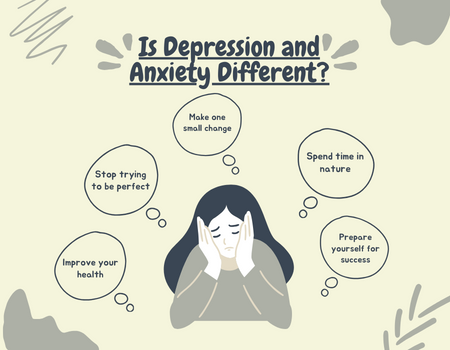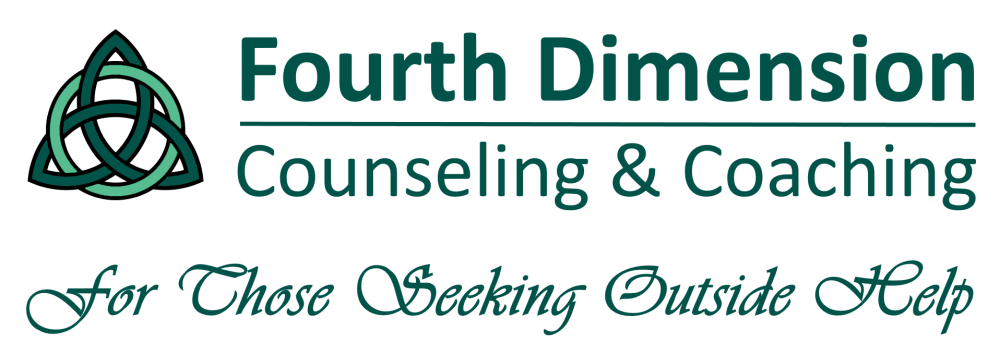The terms “depression” and “anxiety” are frequently used in discussions surrounding mental health, and while they share some common characteristics, they represent distinct and complex emotional states. Understanding the differences between depression and anxiety is crucial for accurate diagnosis, effective treatment, and providing appropriate support to individuals experiencing these conditions.
Defining Depression
Depression, referred to as major depressive disorder (MDD) or clinical depression, is a mood disorder distinguished by enduring emotions of sadness, despair, and a diminished interest or pleasure in activities that were previously enjoyable.
Key Features of Depression:
 Pervasive Sadness: A predominant and enduring feeling of sadness is a hallmark of depression. This emotional state is not solely linked to external circumstances but is a pervasive and often unexplained sense of despair.
Pervasive Sadness: A predominant and enduring feeling of sadness is a hallmark of depression. This emotional state is not solely linked to external circumstances but is a pervasive and often unexplained sense of despair.- Loss of Interest or Pleasure: Individuals experiencing depression often lose interest in activities that used to bring them joy. Hobbies, socializing, and other once-enjoyable pursuits may become burdensome or uninteresting.
- Changes in Sleep Patterns: Depression can disrupt sleep patterns, leading to either insomnia or hypersomnia (excessive sleep). Sleep disturbances contribute to feelings of fatigue and exacerbate the overall sense of lethargy.
- Appetite Changes: Significant changes in appetite, leading to weight loss or gain, are common symptoms of depression.
- Fatigue and Low Energy: Depression is frequently accompanied by persistent feelings of fatigue and a lack of energy.
- Feelings of Worthlessness or Guilt: Individuals with depression may experience intense feelings of worthlessness or guilt, often unrelated to specific actions or events. These feelings can contribute to a negative self-perception.
- Difficulty Concentrating: Depression can impact cognitive functions, making it challenging to concentrate, make decisions, or engage in tasks that require sustained focus.
Defining Anxiety
Anxiety, on the other hand, is a broad term that encompasses a range of disorders characterized by excessive worry, fear, and heightened physiological arousal. While it is normal to experience anxiety in response to certain stressors, anxiety disorders involve persistent and excessive worry that interferes with daily functioning.
Key Features of Anxiety:
- Excessive Worry: Anxiety disorders are defined by excessive and uncontrollable worry about a wide range of situations, often beyond what is proportionate to the actual threat.
- Physical Symptoms: Anxiety is accompanied by physiological symptoms, such as increased heart rate, muscle tension, sweating, trembling, and restlessness. These symptoms are part of the body’s “fight or flight” response to perceived threats.
- Restlessness and Irritability: Individuals with anxiety often experience restlessness and irritability. It can be challenging for them to relax, and they may feel constantly on edge.
- Difficulty Sleeping: Sleep disturbances are common in anxiety disorders. Individuals may have trouble falling asleep, staying asleep, or experience restless and disturbed sleep.
- Muscle Tension: Chronic muscle tension, often experienced as stiffness or soreness, is a physical manifestation of anxiety. This tension can contribute to headaches and overall discomfort.
- Avoidance Behaviors: Individuals with anxiety may engage in avoidance behaviors to evade situations or stimuli that trigger their anxious feelings. This can limit their activities and negatively impact their quality of life.
- Panic Attacks: Some anxiety disorders, such as panic disorder, involve recurrent and unexpected panic attacks. These attacks are intense episodes of fear accompanied by physical symptoms like chest pain, shortness of breath, and dizziness.
Key Differences Between Depression and Anxiety:
While depression and anxiety often coexist, they have distinctive features that set them apart:
- Emotional Focus:
- Depression: Characterized by a pervasive sense of sadness, hopelessness, and a diminished ability to experience pleasure. Individuals with depression may describe feeling emotionally “flat” or numb.
- Anxiety: Centered around excessive worry, fear, and a heightened state of arousal. Anxiety tends to be future-oriented, with individuals anticipating negative outcomes.
- Cognitive Patterns:
- Depression: Associated with negative thoughts about oneself, the world, and the future. Individuals may have a negative outlook and struggle with feelings of worthlessness or guilt.
- Anxiety: Involves excessive and often irrational worry about potential future events. Catastrophic thinking and an inability to shake off worries are common cognitive patterns.
- Physical Symptoms:
- Depression: Physical symptoms in depression are often related to fatigue, changes in appetite, and disrupted sleep patterns. Psychomotor retardation, where movements and thought processes slow down, is also common.
- Anxiety: Physical symptoms in anxiety include muscle tension, restlessness, and a heightened state of arousal. Panic attacks, with intense physical symptoms, are characteristic of certain anxiety disorders.
- Focus of Concern:
- Depression: Individuals with depression often struggle with a pervasive sense of unhappiness and lack of interest in life. The focus is on the emotional experience of sadness and emptiness.
- Anxiety: The central theme in anxiety is worry and fear. Individuals may be preoccupied with potential future threats, leading to a constant state of apprehension.
- Impact on Behavior:
- Depression: Often associated with a lack of motivation and interest in activities. Individuals may withdraw from social interactions and struggle to engage in day-to-day tasks.
- Anxiety: Can lead to avoidance behaviors as individuals try to steer clear of situations that trigger anxiety. This can limit their activities and negatively impact their quality of life.
Co-Occurrence of Depression and Anxiety:
It’s important to note that depression and anxiety frequently co-occur. The term “comorbid” is used to describe the presence of two or more disorders in an individual. When depression and anxiety coexist, the challenges can be compounded, leading to a more complex clinical picture.
Recognizing the differences between depression and anxiety is crucial for accurate diagnosis and effective treatment. It’s important to approach mental health with empathy and understanding, acknowledging that individuals may experience a range of emotions and symptoms that vary in intensity and duration.
